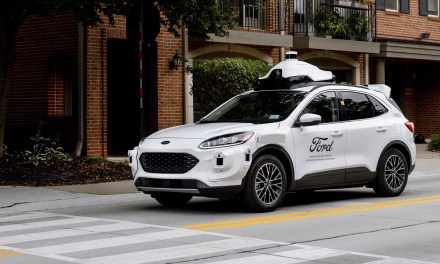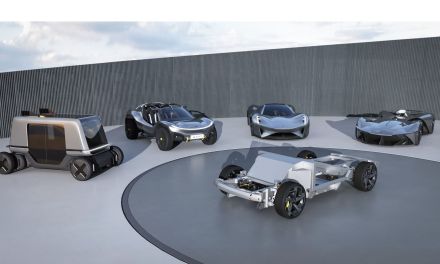Porsche has revealed its latest concept study called Mission X, a hypercar with a high-performance electric powertrain. Oliver Blume, Chairman of the Executive Board of Porsche AG, and Michael Mauer, Vice President of Style at Porsche, presented the concept at the “75 Years of Porsche Sports Cars” exhibition opening at the Porsche Museum in Stuttgart-Zuffenhausen. On June 8th, 1948, the 356 “No. 1” Roadster became the first car bearing the Porsche name to receive its general operating permit.
“The Porsche Mission X is a technology beacon for the sports car of the future,” said Blume. “It picks up the torch of iconic sports cars of decades past. Like the 959, Carrera GT, and 918 Spyder before it, the Mission X provides the critical impetus for the evolutionary development of future vehicle concepts.”
In 1985, the 959 made its debut with a 443-hp six-cylinder twin-turbo engine, combined with an aerodynamically optimized body, to propel the super sports car to a top speed of 317 km/h (197 mph)—then the world record for a series-production sports car. The 2003 Carrera GT, with a 605-hp V10 engine, was the first series-production Porsche made of carbon fiber. In September 2013, the 875-hp two-seat 918 Spyder hybrid was the first road-approved vehicle to crack the 7-min barrier on the Nürburgring’s 20.6-km Nordschleife, completing the lap in 6:57 min.
“Mission X is a clear commitment to the core of the brand,” added Mauer. “The continuing, enhanced expression of our brand and product identity is an important compass for us to navigate the development of our series-production models. The concept study symbolizes a symbiosis of unmistakable motorsport DNA with a luxurious overall impression.”
Key targets for the concept were “top marks” in power-to-weight ratio, downforce, and charging performance, though specific numbers were scarce. If the Mission X goes into series production, planners promise it will be the fastest road-legal vehicle around the Nürburgring Nordschleife. The car had to have a power-to-weight ratio of roughly one PS (German horsepower) per kilogram. It had to achieve downforce values well in excess of those delivered by the current 911 GT3 RS. The concept had to offer significantly improved charging performance with its 900-V system architecture and charge roughly twice as quickly as Porsche’s current benchmark, the 800-V Taycan Turbo S.
The Mission X is a relatively compact hypercar, measuring about 4.5 m (177 in) long and 2 m (79 in) wide. The low-slung car is less than 1.2 m (47.2 in) tall with a relatively long wheelbase of 2.73 m (107.4 in).
The car’s adaptive aerodynamic elements are intelligently controlled based on parameters such as driving mode, lateral acceleration, and speed to optimize drag for efficiency and downforce for high-speed stability. Maximum downforce is achieved by means of Porsche Active Aerodynamics, which includes a Drag Reduction System and aerodynamic elements in the lower area of the car and in the underbody. Mixed-size tires, with front 20-in and rear 21-in wheels for aerodynamic purposes, the car has The rear wheels are fitted with almost transparent “aeroblades” designed like turbines for better brake cooling.
The concept uses Porsche’s next generation of powerful, permanently excited synchronous motors like those in the 2021 Mission R concept study—though specific numbers weren’t divulged. Direct cooling of the stator feeds oil directly along the copper windings, allowing heat to be dissipated more effectively at the source. This results in high and consistent peak performance and high efficiency. The performance potential of the electric motors means that a compact, weight-optimized single-speed transmission can be used.
The propulsion battery is installed not under the floor but centrally behind the vehicle’s seats, the “e-core layout” centering the mass in the car and enabling a low seating position. As with a conventionally powered mid-engine car, this is said to result in better agility.
The battery is integrated into the rear of the car as a part of a lightweight construction concept. Individual systems are combined to form functionally integrated structures that perform both thermal and mechanical tasks. Cooling systems, for example, are integrated directly into body support structures, which both saves weight and optimizes cooling.
Also contributing to the light weight are large-scale carbon-weave sections, light-frame support structures, 900-V architecture, the compact powertrain, and the carbon-fiber-reinforced plastic (CFRP) roof exoskeleton.
The car is finished in special Rocket Metallic color with carbon-weave elements below the beltline in a satin finish. Over the occupants is a lightweight glass dome supported by that exoskeleton and Le Mans-style doors attached to the A-pillar and the roof, so they open forward and upward like on the Porsche 917 racing car.
The front light signature is a reinterpreted Porsche four-point graphic, with the vertical base form of the headlights inspired by historic racing cars such as the Porsche 906 and 908 but drawn down toward the road. The high-tech support structure frames the LED light modules and presents the exposed narrow elements of daytime running lights and indicators. When activated, the light opens up “like an eye blinking open.”
In the rear is a full-length light that appears to float and transparent, illuminated Porsche lettering. While charging, the “e” of the “PORSCHE” lettering pulsates. The four segments of the sculptural rear light are suspended from intricate support structures. The Mission X debuts a modernized Porsche crest on the hood, steering wheel, and wheels of brushed precious metal, a three-dimensional honeycomb structure, a refreshed heraldic beast, and a more subtle gold color.
Inside, a focus on the driver translates to asymmetry in design and color. Andaluz Brown is the predominant interior color with touches of Kalahari Grey on the driver’s seat and steering wheel. Motorsport influences are seen in the CFRP seat shells, their six-point seatbelts, and open-top steering wheel with mode switches and shift paddles. The seats can be customized with 3D-printed body forms.
The instrument cluster has a concave shape for better readability. The concept offers the choice between a display featuring classic Porsche dials, a full-screen navigation map, or dedicated track-focused content.
The 7.8-in central display faces the driver, with large aluminum controls on the right and climate controls that can even be operated with racing gloves on. In classic Porsche fashion, the “Le Mans” starter button is located to the left of the steering wheel with a design inspired by the metallic detailing of traditional cameras.
A pair of 6-in displays between the door panel and A-pillars function as digital side view mirrors using images from external cameras. Video can be recorded inside the car using one camera mounted in the roof and two cameras on the doors next to the digital exterior mirrors.
On the passenger side is a bayonet system in the instrument panel with which a stopwatch module can be attached. Porsche Design created a special stopwatch module with analog and digital displays for both the racetrack and rally use for the display of lap times and other vital data.
- Porsche Mission X concept study.
- Porsche Mission X concept study.
- Porsche Mission X concept study.
- Porsche Mission X concept study.
- Porsche Mission X concept study.
- Porsche Mission X concept study.
- Porsche Mission X concept study interior sketch.
- Porsche Mission X concept study.
- Porsche Mission X concept study.
- Porsche Mission X concept study.










































































































